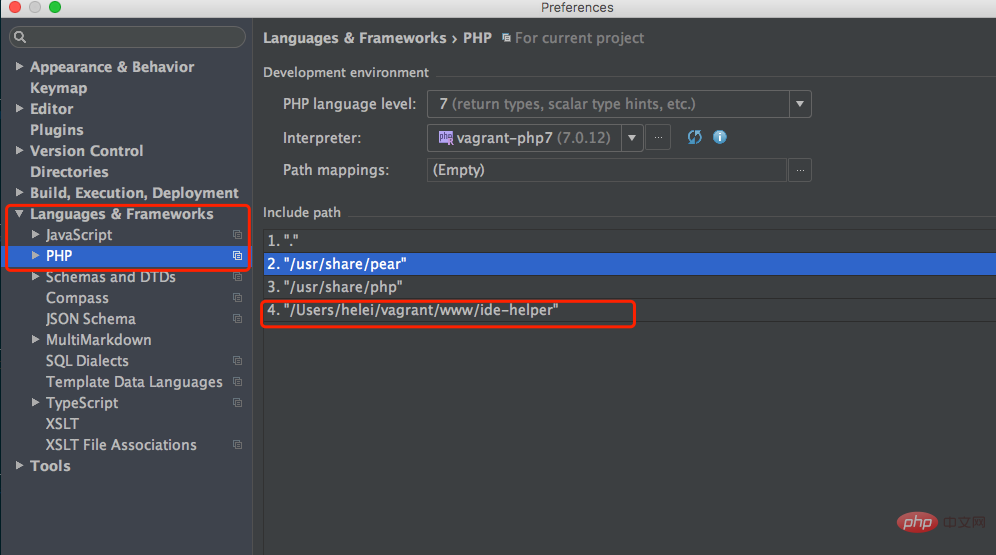How to install Swoole in PHP7
Swoole is an asynchronous, parallel, high-performance network communication engine in PHP, supporting TCP long connections, Websocket, Mqtt and other protocols. It is widely used in the development of mobile apps, mobile game servers, online game servers, chat rooms, hardware communications, smart homes, Internet of Vehicles, Internet of Things and other fields. The following editor introduces the installation process in detail.

It’s been a long time since I’ve updated. It’s not that I’m lazy, it’s that I’m too busy! Finally got a few days of free time.
During this period, I am going to bring you an introductory tutorial on swoole to feel the power of nodeJs in php.
All sample codes are placed on github: learn-swoole
Environment
Apache is not used as the web server here. Use nginx php-fpm, which has more powerful performance and easier configuration. And in order to keep up with the pace of PHP, a relatively new PHP version is also used
[x] centos7
[x] php7.0.12
[x] nginx/1.10.2
[x] php-fpm
Download swoole
First download the source code package of swoole. This operation is very simple and there is not much to say.
wget -c https://github.com/swoole/swoole-src/archive/v2.0.6.tar.gz 解压: tar -zxvf v2.0.6.tar.gz cd swoole-src-2.0.6/
Compilation & Installation
Use phpize to generate php compilation configuration
./configure to do compilation configuration detection
make Compile and make install to install
Command execution:
[root@php7 swoole-src-2.0.6]# phpize [root@php7 swoole-src-2.0.6]# ./configure [root@php7 swoole-src-2.0.6]# make && make install
After make install, if correct, the following content will appear
[root@php7 swoole-src-2.0.6]# make install Installing shared extensions: /usr/lib64/php/modules/
This means that in /usr/lib64/ In the php/modules/ directory, the swoole.so file was successfully generated
Modify the configuration file
To be able to use this module, you also need to add it to the php.ini file this module.
It should be noted here that the module configuration files of php7 are separated separately.
The following content can be found in php.ini
Therefore, if your php is installed, If there is no special setting, you can find the configuration file for adding the module in the /etc/php.d directory. Enter the cd /etc/php.d directory and complete the relevant configuration;;;;
; Note: packaged extension modules are now loaded via the .ini files
; found in the directory /etc/php.d; these are loaded by default.
##;;;;
[root@php7 swoole-src-2.0.6]# vim swoole.ini ; Enable swoole extension module extension=swoole.so
Restart the service
After adding the php module, you need to restart It will take effect only after starting the service. If sometimes it still doesn't work after restarting, please close it first and then restart it.[root@php7 swoole-src-2.0.6]# systemctl restart nginx [root@php7 swoole-src-2.0.6]# systemctl restart php-fpm

git clone git@github.com:eaglewu/swoole-ide-helper.git ide-helper

git clone git@github.com:helei112g/learn-swoole.git
- First, run the server-side listening program
php demo1-serv.php
Client: Connect.
- Open another terminal, use telnet to connect to the port that the current server is listening to, and enter some text to observe the changes in the terminal.
[root@php7 ~]# telnet 127.0.0.1 9999Hi!Server: Hi!
[root@php7 ~]# Ctrl+] [root@php7 ~]# telnet> quit
Client: Close.PS: If telnet is not installed in the test environment, please google to install it yourself. Recommended learning:
The above is the detailed content of How to install Swoole in PHP7. For more information, please follow other related articles on the PHP Chinese website!

Hot AI Tools

Undresser.AI Undress
AI-powered app for creating realistic nude photos

AI Clothes Remover
Online AI tool for removing clothes from photos.

Undress AI Tool
Undress images for free

Clothoff.io
AI clothes remover

AI Hentai Generator
Generate AI Hentai for free.

Hot Article

Hot Tools

Notepad++7.3.1
Easy-to-use and free code editor

SublimeText3 Chinese version
Chinese version, very easy to use

Zend Studio 13.0.1
Powerful PHP integrated development environment

Dreamweaver CS6
Visual web development tools

SublimeText3 Mac version
God-level code editing software (SublimeText3)

Hot Topics
 1385
1385
 52
52
 PHP 8.4 Installation and Upgrade guide for Ubuntu and Debian
Dec 24, 2024 pm 04:42 PM
PHP 8.4 Installation and Upgrade guide for Ubuntu and Debian
Dec 24, 2024 pm 04:42 PM
PHP 8.4 brings several new features, security improvements, and performance improvements with healthy amounts of feature deprecations and removals. This guide explains how to install PHP 8.4 or upgrade to PHP 8.4 on Ubuntu, Debian, or their derivati
 How To Set Up Visual Studio Code (VS Code) for PHP Development
Dec 20, 2024 am 11:31 AM
How To Set Up Visual Studio Code (VS Code) for PHP Development
Dec 20, 2024 am 11:31 AM
Visual Studio Code, also known as VS Code, is a free source code editor — or integrated development environment (IDE) — available for all major operating systems. With a large collection of extensions for many programming languages, VS Code can be c
 7 PHP Functions I Regret I Didn't Know Before
Nov 13, 2024 am 09:42 AM
7 PHP Functions I Regret I Didn't Know Before
Nov 13, 2024 am 09:42 AM
If you are an experienced PHP developer, you might have the feeling that you’ve been there and done that already.You have developed a significant number of applications, debugged millions of lines of code, and tweaked a bunch of scripts to achieve op
 How do you parse and process HTML/XML in PHP?
Feb 07, 2025 am 11:57 AM
How do you parse and process HTML/XML in PHP?
Feb 07, 2025 am 11:57 AM
This tutorial demonstrates how to efficiently process XML documents using PHP. XML (eXtensible Markup Language) is a versatile text-based markup language designed for both human readability and machine parsing. It's commonly used for data storage an
 Explain JSON Web Tokens (JWT) and their use case in PHP APIs.
Apr 05, 2025 am 12:04 AM
Explain JSON Web Tokens (JWT) and their use case in PHP APIs.
Apr 05, 2025 am 12:04 AM
JWT is an open standard based on JSON, used to securely transmit information between parties, mainly for identity authentication and information exchange. 1. JWT consists of three parts: Header, Payload and Signature. 2. The working principle of JWT includes three steps: generating JWT, verifying JWT and parsing Payload. 3. When using JWT for authentication in PHP, JWT can be generated and verified, and user role and permission information can be included in advanced usage. 4. Common errors include signature verification failure, token expiration, and payload oversized. Debugging skills include using debugging tools and logging. 5. Performance optimization and best practices include using appropriate signature algorithms, setting validity periods reasonably,
 PHP Program to Count Vowels in a String
Feb 07, 2025 pm 12:12 PM
PHP Program to Count Vowels in a String
Feb 07, 2025 pm 12:12 PM
A string is a sequence of characters, including letters, numbers, and symbols. This tutorial will learn how to calculate the number of vowels in a given string in PHP using different methods. The vowels in English are a, e, i, o, u, and they can be uppercase or lowercase. What is a vowel? Vowels are alphabetic characters that represent a specific pronunciation. There are five vowels in English, including uppercase and lowercase: a, e, i, o, u Example 1 Input: String = "Tutorialspoint" Output: 6 explain The vowels in the string "Tutorialspoint" are u, o, i, a, o, i. There are 6 yuan in total
 Explain late static binding in PHP (static::).
Apr 03, 2025 am 12:04 AM
Explain late static binding in PHP (static::).
Apr 03, 2025 am 12:04 AM
Static binding (static::) implements late static binding (LSB) in PHP, allowing calling classes to be referenced in static contexts rather than defining classes. 1) The parsing process is performed at runtime, 2) Look up the call class in the inheritance relationship, 3) It may bring performance overhead.
 Why does an error occur when installing an extension using PECL in a Docker environment? How to solve it?
Apr 01, 2025 pm 03:06 PM
Why does an error occur when installing an extension using PECL in a Docker environment? How to solve it?
Apr 01, 2025 pm 03:06 PM
Causes and solutions for errors when using PECL to install extensions in Docker environment When using Docker environment, we often encounter some headaches...




